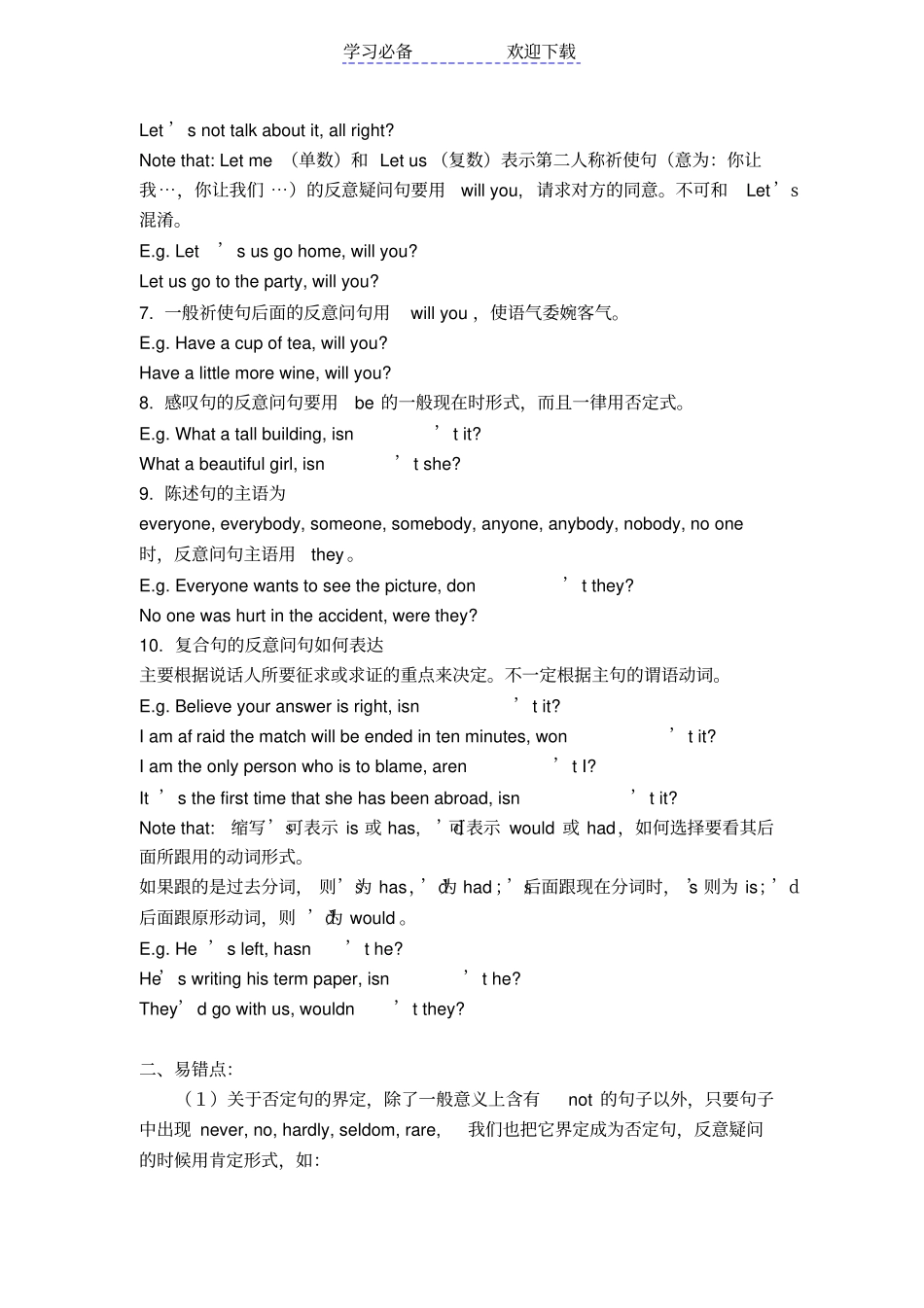学习必备欢迎下载反意疑问句一、反意疑问句在对话中常用来征求对方的看法、赞同与否或求证某一事实。 由前面的陈述句和后面反意疑问句两部分构成。两句之间须用逗号分开。 如陈述句为肯定形式, 反意问句通常用否定形式, 前一部分为否定形式, 后一部分就用肯定形式。两部分的主语必须指同一人或事物,反意疑问句的主语要用代词,两部分谓语应在时态、人称、数上保持一致。E.g. You study English, don’t you?They have decided not to do it, haven’t they?She will b e attending the university in September, won’t she?He’s ready, isn’t he?1. 陈述句的谓语中含有情态动词时,反意问句也应用相应的情态动词E.g. She can drive, can’t she?He should stay in bed, shouldn’t he?(少用 oughtn ’t he?)He dare not do it, dare he? We must try to get there on time, mustn ’t we?(但表示 “必要”时,可用 needn’t we?)2. 当 must 意含 “一定 ”、“想必”等推测性词义时,反意问句不用must ,要看陈述句的具体情况来定。E.g. After a day’s work he must be very fired, isn’t he?You must have waited here for a long time, haven’ you?3. 陈述句中如有 seldom, scarcely, hardly, barely, few, little,以及 never, nothing等否定词时,反意疑问句要用肯定式。E.g. We seldom see these animals, do we? He hardly ever go to the movies, does he? John barely failed in his exams, did he? 4. have 作实意动词时,反意问句用 do, does, did, 作助动词时,仍用,have, has. E.g. Mary has two children, doesn’t she?We hav e a maths quiz tomorrow, don’t we?He has arrived there by now, hasn’t he?5. 陈述句为 there be 句型时,反意问句也用there 。E.g. There is a football match, isn’t there?There seems to be some misspellings in your paper, doesn’t there?6. Let’s和 Let us 的反意问句Let ’s(表示提议)肯定式用shall we? 否定式用 all right? 或?O.K.? E.g. Let’s start early, shall we?学习必备欢迎下载Let ’s not talk about it, all right? Note that: Let me ...


